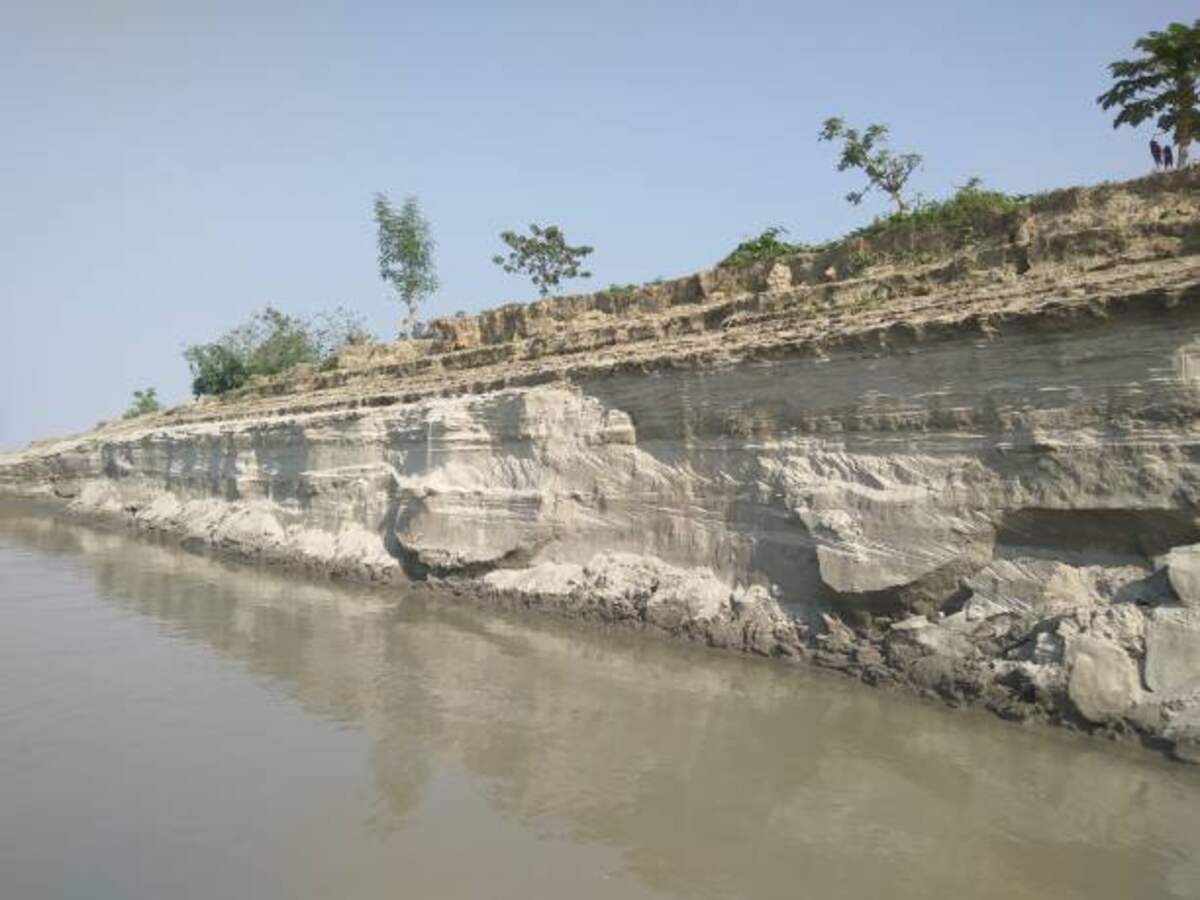Silver Hills Float Service guides in Newton County have reported low water levels along the Buffalo National River and advised KY3 that guests pack light to ensure they bring along enough water, snacks, and sunscreen.
We aimed to assess the inter-annual variability of daily streamflow in the Buffalo catchment over a quasi-local timescale from 1981 to 2020 using continuous wavelet transform, wavelet coherence analysis, innovative trend analysis, and sequential Mann-Kendall analyses as methodologies.
Average Streamflow
The Buffalo River is a free-flowing river that supports diverse ecosystems. It has a karst topography that features numerous springs and sinkholes along its banks, creating clear water with high levels of dissolved minerals. Popular recreational activities on its waters include canoeing and hiking; this river is also home to canyon bats, white-tailed deer, raccoons, and black bears, and it is an excellent fishing spot for smallmouth bass.
The average daily streamflow of the Buffalo River ranges from 0.201 millimeters per second at Quencwe Station to 5.176 mm3/s at Tshoxa; its streamflow variability can be observed as an increasing trend at low flow rates and decreasing trend at high flows (Table 1).
Innovative trend analysis shows that the Buffalo River is highly sensitive and dependent on hydroclimatic fluctuations, as evidenced by its dependence on monthly rainfall and temperature data. Wavelet coherence analysis and antiphase correlation reveal that its fluctuations correlate closely to decreasing rainfall trends, with wavelet coherence levels tending to reverse against reducing precipitation trends.
There are multiple USGS gauges along the Buffalo River, some of which report just stage, while others say both stage and discharge (cfs). Gaining an understanding of how both have fluctuated can help you assess if conditions are suitable for your planned activity.
Dissolved Oxygen
Dissolved oxygen (DO) refers to the concentration of oxygen gas dissolved in water. A sufficient level of DO is essential for aquatic plants, algae, and fish’s survival and growth, with DO increase through atmospheric diffusion as water passes over rocks or waterfalls and through the photosynthesis of aquatic plants. Surface waters tend to have greater DO concentrations due to these sources as well.
Inorganic nutrients in water bodies can reduce DO levels as a result of industrial wastewater discharges, sewage treatment plant runoff, fertilizers from agricultural fields, or organic waste decomposition such as animal dung and fallen leaves. Furthermore, high levels of phosphorus and nitrogen can result in decreased DO levels through eutrophication (the absorption of oxygen by algae and plant life).
Low dissolved oxygen (DO) readings are one measure of poor water quality. Temperature and depth both have an impact, with deeper waters typically having lower DO levels than their surface counterparts. Fish require at least three mg/L DO for survival; those breeding and larval fish require as much as six mg/L in order to thrive. DO testing kits using the Winkler method allow you to test for it quickly; these kits include both meters and probes, which measure DO in water, with replacement reagents available in pre-measured pillows that can run 50 to 100 tests with ease.
Turbidity
Buffalo River and Harbor were historically exposed to large concentrations of industrial contaminants that contributed to poor water quality and reduced fish populations, earning it recognition as a Great Lakes Area of Concern and prompting Honeywell, NYSDEC, and Buffalo Niagara RiverKeeper to form an innovative public/private/nonprofit partnership that would restore it to a healthier state.
The cleanup effort focused on restoring habitat, removing contaminated sediment, and improving water quality. An impressive one million cubic yards of sediment–equivalent to filling a football field 40 stories tall–was removed from the river bottom, leading to a healthier habitat in its place and an uplifting effect for local communities.
Fecal coliforms in the water remain an issue; this contamination is associated with non-point sources like failing septic systems and stormwater runoff, as well as point sources like 33 combined sewer overflows that discharge into the Buffalo River.
To address this issue, NYSDEC contracted Sevenson Environmental to conduct turbidity monitoring around their dredging operations. NexSens data loggers were installed into buoys with optical turbidity sondes from YSI 600OMS, which recorded real-time data using their sondes, with retrieval being via cellular modem from each buoy. Real-time displays were created via NexSens WQData LIVE Web Datacenters for real-time display.
Heavy Metals
The Buffalo River has been listed among 43 Great Lakes Areas of Concern (BUIs) due to legacy contamination and habitat degradation. The Buffalo River Restoration Partnership is working towards cleaning up this river, restoring ecological health, and being removed from BUI lists.
River sediments contaminated with metals, pesticides, PCBs, PAHs, and industrial organic chemicals contain elevated metal levels as well as elevated pesticide, PCB, and PAH levels that have the potential to leach into river water and downstream waters. Although much of this contamination is buried deep underground in sediment layers, it still poses severe threats of leaching into surface waters downstream.
As part of its dredging program, BRRP has conducted laboratory investigations that provide valuable information on river chemistry and environmental effects. These laboratory investigations provide essential knowledge necessary for effective management.
Example: Through Lumbriculus tests (an ecological indicator organism), we have discovered that high concentrations of copper, total PCB congeners, and lead can cause oxygen starvation that kills off Lumbriculus organisms – providing valuable information that can guide remedial actions to increase dissolved oxygen levels in rivers and thus improve their health.
Though water quality and ecological health have improved significantly over time, challenges still exist for the Buffalo River. Public and private activities outside its boundaries have an immediate effect on its interior; heavy rain can wash dirt off unpaved roads it, while summer algae blooms can lead to fish kills.


